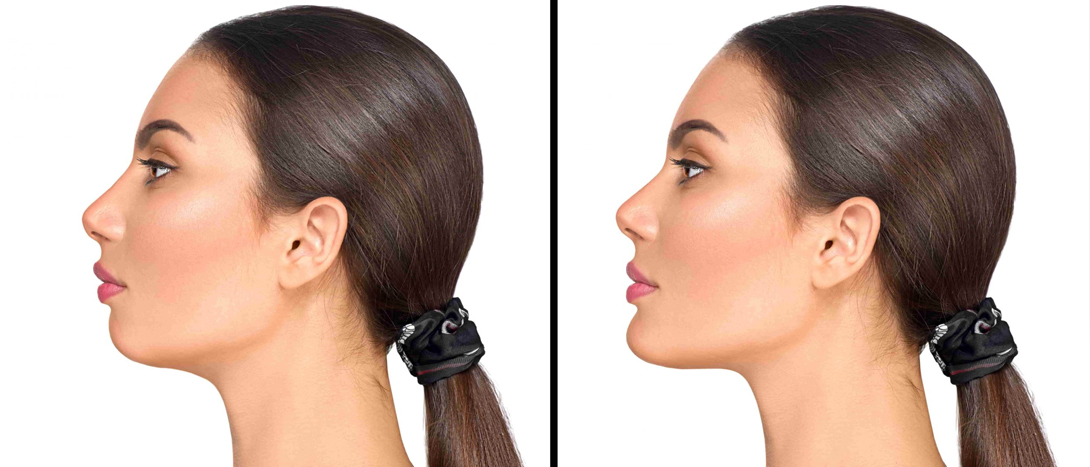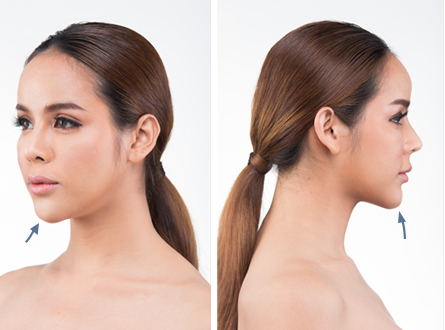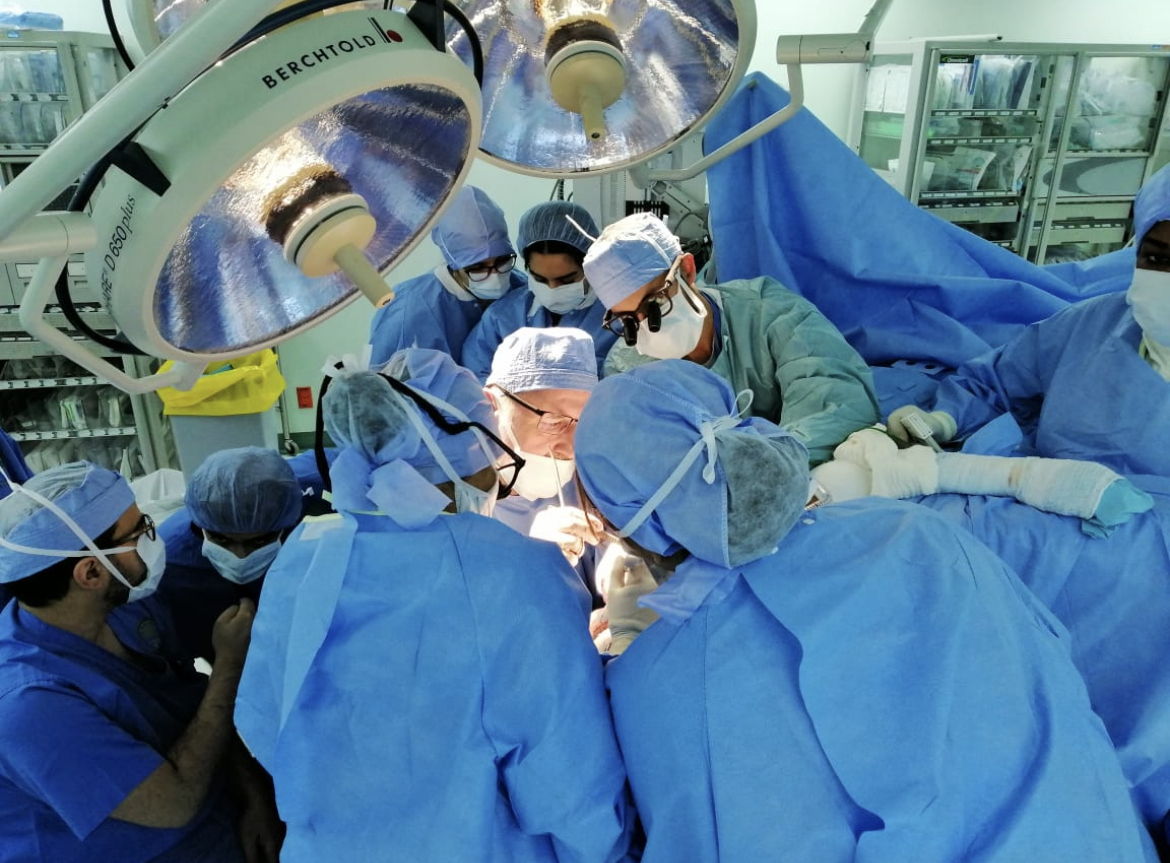
Chin Implant – Facial Implants
What are facial implants?
Facial implants are specially formed solid materials compatible with human tissues, designed to enhance or augment the physical structure of your face.
The precise type and size of facial implants best suited for you requires an evaluation of your goals, the features you wish to correct and your surgeon’s judgment.
While any area of your face can be augmented with implants, the cheeks, chin and jaw are the most common sites for facial implants. If you are bothered by a small chin, weak jaw or lack of facial contour, plastic surgery with facial implants may benefit you.
Chin implants
Chin implants can increase the size and projection of a chin that is not in proportion with the forehead and mid-face. A small or recessed chin can also be described as one that seems to disappear into the neck of an individual of normal weight, rather than appearing as a distinct facial feature.
Jaw implants
Jaw implants increase the width of the lower third of your face. Much like the chin, a weak jaw can be thought of as one that is not well defined and distinct from the neck or one that slopes rather than angles from the ear to the chin. In some cases, both the chin and jaw can contribute to facial imbalance.
Cheek implants
Cheek implants increase the projection of the cheekbones. They add volume to areas that may be recessed or flat.
Who is a good candidate for facial implants?
Plastic surgery with facial implants is best performed on people whose head and skull have reached physical maturity, which generally occurs in late adolescence.
You may be a good candidate for facial implants if you:
- Are physically healthy
- Do not smoke
- Have a positive outlook and specific goals in mind for improvement of facial contours
If you are bothered by a small chin, weak jaw or lack of facial contour, plastic surgery with facial implants may benefit you.
What are the risks of facial implants?
The decision to have facial implant surgery is extremely personal, and you’ll have to decide if the benefits will achieve your goals and if the risks and potential complications of facial implants are acceptable.
You will be asked to sign consent forms to ensure that you fully understand the procedure and any risks and potential complications.
Facial implant surgery risks include:
- Allergies to tape, suture materials and glues, blood products, topical preparations or injected agents
- Anesthesia risks
- Bleeding
- Change in skin sensation
- Damage to deeper structures – such as nerves, blood vessels, muscles and lungs – can occur and may be temporary or permanent
- Firmness around the implant
- Infection
- Persistent pain
- Poor healing of incisions
- Possible revisional surgery
- Shifting of implants
- Skin contour irregularities
- Skin discoloration, swelling and sensitivity
- Unfavorable scarring
These risks and others will be fully discussed prior to your consent. It is important that you address all your questions directly with your plastic surgeon.
What are the steps of a facial implants procedure?
A facial implants procedure may include the following steps:
Anesthesia
Medications are administered for your comfort during the surgical procedures. The options include intravenous sedation and general anesthesia.Your doctor will recommend the best option for you.
Cheek implants
The specific area to be augmented in the cheek determines where an implant will be positioned on the cheekbone. Cheek implants are most often placed through incisions in the mouth. When performed with other procedures, alternate incisions may be recommended including placement through an incision inside the lower eyelid or one within the hairline.
Chin implants
For a chin implant, the incision may be inside your mouth, along the crease that joins your lower lip and gums. An incision just beneath the chin is an alternative.
Jaw implants
Jaw implants are generally placed through the mouth with incisions inside the mouth, back along the jawline at the crease where the inside of your cheek and gums meet. Your incisions will be closed with absorbable sutures or stitches that will be removed within one to two weeks following your surgery.
What should I expect during my facial implants recovery?
During your facial implants recovery, bandages or dressings may be applied to keep the surgical site clean and to support the position of the implant during initial healing once your procedure is finished.
You will be given specific instructions about how to care for the surgical site, medications to apply or take orally to aid healing and reduce the potential for infection, specific concerns to look for at the surgical site or in your general health and when to follow up with your plastic surgeon.
Be sure to ask your plastic surgeon specific questions about what you can expect during your individual recovery period.
- Where will I be taken after my surgery is complete?
- What medication will I be given or prescribed after surgery?
- Will I have dressings/bandages after surgery?
- When will they be removed?
- Are stitches removed? When?
- When can I resume normal activity and exercise?
- When do I return for follow-up care?


